

Tours at Torness Power Station in East Lothian: Everything You Need to Know
by amber | Jul 9, 2023 | East Lothian Attractions | 0 comments
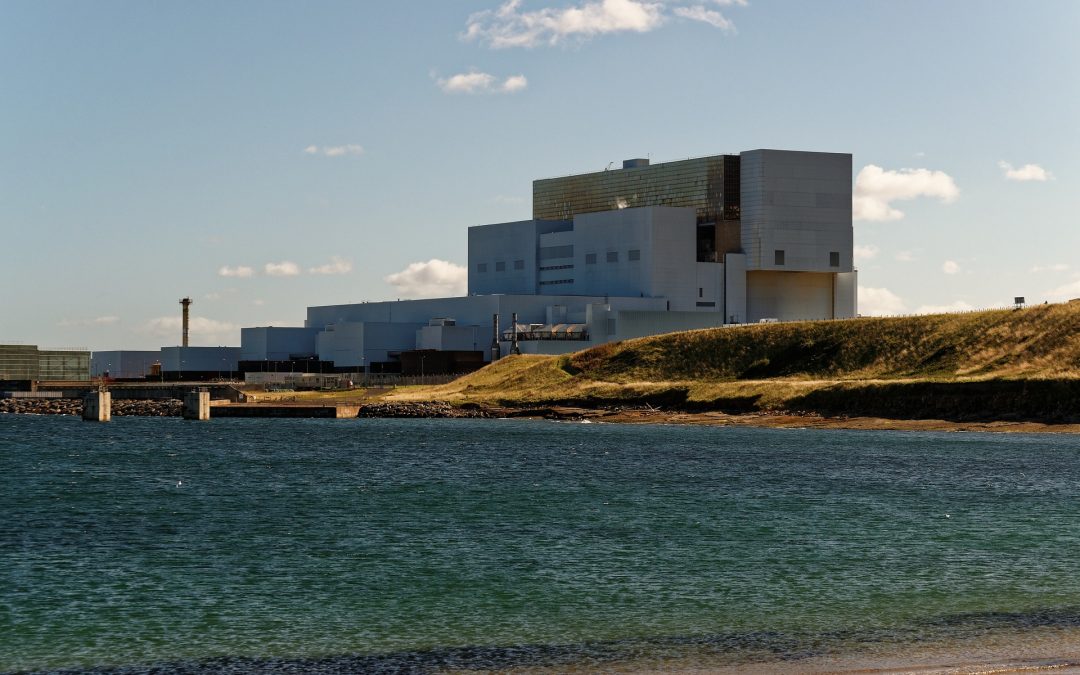
Torness Power Station in East Lothian is a major landmark in the area and is one of Scotland’s two nuclear power stations. The power station has been operational since 1988 and generates enough electricity to power around 2 million homes. For those interested in learning more about the inner workings of the power station, Torness offers tours to the public.
During the tour, visitors will have the opportunity to see the various stages of electricity production, from the nuclear reactors to the turbines. The tour guides are knowledgeable and provide a clear explanation of how the power station operates. Safety is a top priority, and visitors are required to follow strict guidelines throughout the tour. Overall, the tour provides a fascinating insight into the production of electricity and the role that Torness Power Station plays in meeting the energy needs of Scotland.
Overview of Torness Power Station
Torness Power Station is a nuclear power station located in East Lothian, Scotland. It is operated by EDF Energy and is one of the two nuclear power stations in Scotland, the other being Hunterston B.
The power station has two advanced gas-cooled reactors (AGRs) which generate electricity by using nuclear fission to heat water, which then powers turbines. The AGRs at Torness Power Station are among the most reliable in the world, with a capacity factor of over 80%.
The reactors at Torness Power Station are cooled by carbon dioxide gas, which is a more efficient cooling medium than water. This allows the reactors to operate at a higher temperature, which in turn increases their efficiency.
Torness Power Station has been in operation since 1988 and has a total capacity of 1,248 megawatts. It generates enough electricity to power over two million homes and is a vital part of the UK’s energy infrastructure.
Tours at Torness Power Station
Torness Power Station offers tours to the general public, providing an opportunity to learn about nuclear power generation and the role Torness plays in the UK’s energy supply. The tours are conducted by knowledgeable and experienced guides who are happy to answer any questions visitors may have.
The tours are free of charge and are suitable for people of all ages. Visitors are required to book in advance, and tours are subject to availability. The visitor centre is open from Monday to Friday, and tours typically last around two hours.
During the tour, visitors are taken around the site, including the reactor hall and turbine hall. The tour guides explain how the power station works, the safety measures in place, and the environmental impact of nuclear power generation.
Visitors are also shown the control room, where they can see the operators at work and learn about the complex systems and procedures involved in running a nuclear power station.
The tour is an excellent opportunity for anyone interested in science, engineering, or the environment to learn more about nuclear power generation and its role in the UK’s energy supply. Visitors are encouraged to ask questions and engage with the tour guide to get the most out of their visit.
Visitor Experience
Visitors to Torness Power Station in East Lothian can expect an informative and educational experience that provides a unique insight into the workings of a nuclear power station. The tour is designed to be accessible to all, regardless of prior knowledge or experience.
The visitor centre at Torness Power Station features a range of exhibits, diagrams, and displays that help to explain the science behind nuclear power generation. Visitors can learn about the different types of energy produced at the station, as well as the safety measures in place to ensure the smooth running of the facility.
One of the highlights of the tour is the opportunity to see the power station up close. Visitors are taken on a guided tour of the facility, where they can see the various components of the power station in action. The tour provides a fascinating contrast between the high-tech machinery used to generate power and the natural beauty of the surrounding landscape.
Throughout the tour, visitors are provided with clear and concise explanations of the various processes involved in nuclear power generation. The knowledgeable guides are on hand to answer any questions visitors may have and to provide further insights into the workings of the power station.
In addition to the informative aspects of the tour, visitors are also treated to some stunning views of the surrounding area. The power station is situated in a picturesque location, with views over the North Sea and the rugged coastline of East Lothian.
Safety Measures
At Torness Power Station, safety is a top priority. The station follows strict safety protocols to ensure the well-being of its workers and visitors.
Before entering the station, visitors are required to attend a safety briefing where they are informed of the safety measures in place. The briefing covers topics such as emergency procedures, personal protective equipment (PPE), and potential hazards.
All workers at Torness Power Station are required to wear appropriate PPE, including hard hats, safety glasses, and high-visibility clothing. The station also has strict rules regarding the use of mobile phones and other electronic devices to prevent distractions and ensure focus on the task at hand.
In addition to these measures, Torness Power Station has a dedicated safety team that conducts regular safety audits and inspections. The team is responsible for identifying potential hazards and implementing measures to mitigate risk.
Torness Power Station also has an emergency response team that is trained to respond to any potential emergencies. The team is equipped with the necessary equipment and resources to deal with any situation that may arise.
Location and Accessibility
Torness Power Station is located near the town of Dunbar in East Lothian, Scotland. It is easily accessible by car and is located just off the A1, which is the main road that connects Edinburgh and London.
Visitors can follow the signs to the power station, which is clearly visible from the road. There is ample car parking available on site, and visitors can park for free.
For those travelling by public transport, the nearest train station is Dunbar, which is approximately 5 miles away from the power station. Visitors can then take a taxi or bus to reach the power station.
The power station is located in a beautiful coastal area of Scotland, which visitors can explore before or after the tour. There are many attractions nearby, including the John Muir Country Park, which is a popular spot for hiking and wildlife watching.
Surrounding Area
Torness Power Station is located in a beautiful area of East Lothian, offering visitors a variety of attractions and activities to enjoy.
For those who enjoy walking, there are several scenic routes to explore in the surrounding area. The John Muir Way, a 134-mile long-distance walking route, passes through the nearby town of Dunbar and offers stunning views of the coast and countryside.
Wind enthusiasts can take advantage of the strong sea breezes in the area and enjoy a range of activities such as kite surfing and windsurfing.
Groups interested in learning more about the power station can arrange a tour and gain insight into how it operates.
The nearby Belhaven Bay is a popular beach with visitors and locals alike. It offers miles of golden sand and is perfect for a relaxing day out.
For those who enjoy exploring nature, the area is home to a variety of wildlife and flora. The rocky shoreline provides a great opportunity to spot seals and seabirds, while the nearby John Muir Country Park is a haven for wildflowers and butterflies.
There is also a caravan site nearby for those who wish to stay overnight and enjoy the local area at their leisure.
The local community is welcoming and friendly, with several events and festivals taking place throughout the year. The East Lothian Council provides information on local attractions and things to see in the area.
Power Generation Process
Torness Power Station is an operational nuclear power station located in East Lothian, Scotland. The power station generates electricity using advanced gas-cooled reactors (AGRs) that use carbon dioxide gas as a coolant.
The power generation process at Torness Power Station involves several steps. The following are the main steps involved in generating electricity at Torness Power Station:
- Reactors: The power station has two gas-cooled reactors that use enriched uranium as fuel. The reactors generate heat through a controlled nuclear reaction.
- Cooling: The heat generated by the reactors is used to produce steam, which drives turbines to generate electricity. The cooling system at Torness Power Station uses seawater from the North Sea to condense the steam back into water.
- Turbines: The turbines are connected to generators that produce electricity. The power station has two sets of turbines and generators, one for each reactor.
- Transmission: The electricity generated at Torness Power Station is transmitted to the National Grid, which distributes it to homes and businesses across Scotland and England.
The technology used at Torness Power Station is designed to ensure safe and reliable operation. The power station has a range of safety systems and procedures in place to protect workers, the public, and the environment.
Construction and Engineering
Torness Power Station was constructed in the 1980s and is a prime example of innovative engineering and construction. The power station was designed with two AGR (Advanced Gas-cooled Reactor) units, each with a capacity of 640 MW. The station was built on a 150-acre site and took around 7 years to complete.
The engineering team at Torness Power Station played a crucial role in the design and construction of the plant. The team was responsible for ensuring that the plant was built to the highest standards of safety and efficiency. The team used innovative techniques and technologies to ensure that the plant was built to withstand the harsh conditions of the East Lothian coast.
The construction of Torness Power Station was a major undertaking. The site required extensive preparation before construction could begin. The team had to excavate the site and build a foundation that could support the weight of the reactors and other equipment. The construction team also had to build a complex network of tunnels and pipes to transport water and other materials around the site.
The structures at Torness Power Station are designed to withstand extreme weather conditions. The buildings are constructed from reinforced concrete and are designed to resist the force of high winds and waves. The reactors themselves are housed in a large steel containment vessel that is designed to withstand the force of an explosion.
Customer Care and Services
At Torness Power Station, we prioritize customer care and services to ensure that our visitors have a safe and enjoyable experience. Our knowledgeable and friendly staff are always on hand to answer any questions you may have and help you navigate the site.
We offer a range of services to make your visit as comfortable as possible. Our facilities include:
- Free parking for visitors
- Wheelchair accessibility
- Restrooms with baby changing facilities
- A café serving hot and cold drinks and snacks
In addition to these services, we also offer guided tours of the power station. Our tour guides are trained to provide clear and concise information about the power station’s operations and answer any questions you may have.
We understand that safety is a top concern for our visitors, and we take this very seriously. Before the tour, all visitors are given a safety briefing and are required to wear appropriate safety gear, including hard hats and safety glasses. Our guides also ensure that visitors stay in designated areas and follow all safety protocols.
Submit a Comment Cancel reply
Your email address will not be published. Required fields are marked *
Save my name, email, and website in this browser for the next time I comment.
Recent Posts
- St Mary’s Parish Church East Lothian: A Historic Landmark in Scotland
- Shepherd House Garden: A Hidden Gem in East Lothian
- Seacliff Beach East Lothian: A Hidden Gem on Scotland’s Coastline
- Gullane Beach in East Lothian: A Comprehensive Guide
- North Berwick History: Tracing the Roots of this Coastal Town

Torness Point Visitor Guide

Torness Power Station is a nuclear facility in East Lothian that’s operated by EDF Energy and is capable of producing up to 1.3 gigawatts of electricity, which is enough to power around 2 million homes. The power station is situated on the coast near the town of Dunbar and has been in operation since 1988, though it is now expected to be decommissioned in 2028.
As well as having a 5-star visitor centre that gives free tours to visitors, Torness has a superb coastal footpath that runs along the coastline between Thorntonloch Beach to the south and Barns Ness Lighthouse to the north.
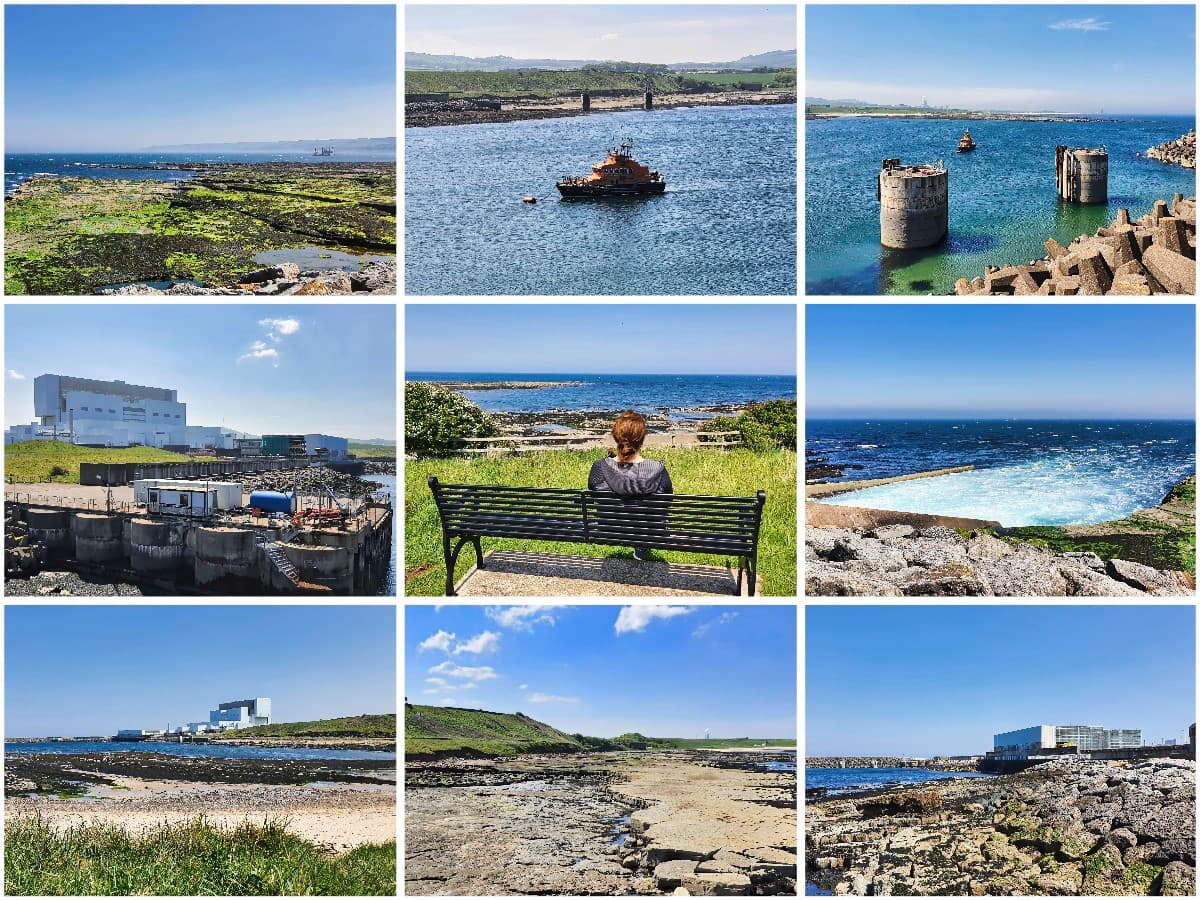
A nuclear power station might not seem like the perfect destination for a coastal walk, but Torness in East Lothian may just surprise you. The power plant that sits on the edge of Torness Point is one of the largest in Scotland, consisting of two second-generation gas-cooled reactors that use seawater in their operation, hence the power station’s location close to the shoreline.
East Lothian is renowned for its attractive coves and bays and the stretch of coastline past Dunbar heading south to Torness is an absolute stunner and is a must-visit for anyone that enjoys the salty tang of sea air and the sights and sounds of lapping waves.
Torness is just part of the walking trail that runs along this part of East Lothian between Dunbar and the Scottish Borders but it’s perhaps the highlight as not only is the enormous nuclear station quite a sight, but it’s situated between two very scenic beaches.
Getting to Torness Point is easy as it’s well-signposted 4 miles from Dunbar on the A1. For those visitors coming from Dunbar, the best option for parking is to look for the left-hand turn signed ‘Skateraw’ just before the junction of the power plant.
Head down this road for 3/4 mile and you’ll arrive at the Skateraw Lime Kiln car park, which has public toilets and picnic benches and is situated at the edge of a secluded bay, Chapel Point, which has a nice wee beach and is somewhat sheltered from the pummeling North Sea waves. It’s a great place for swimming, and on the various occasions I’ve visited, it has been exceptionally quiet, even in the height of summer.
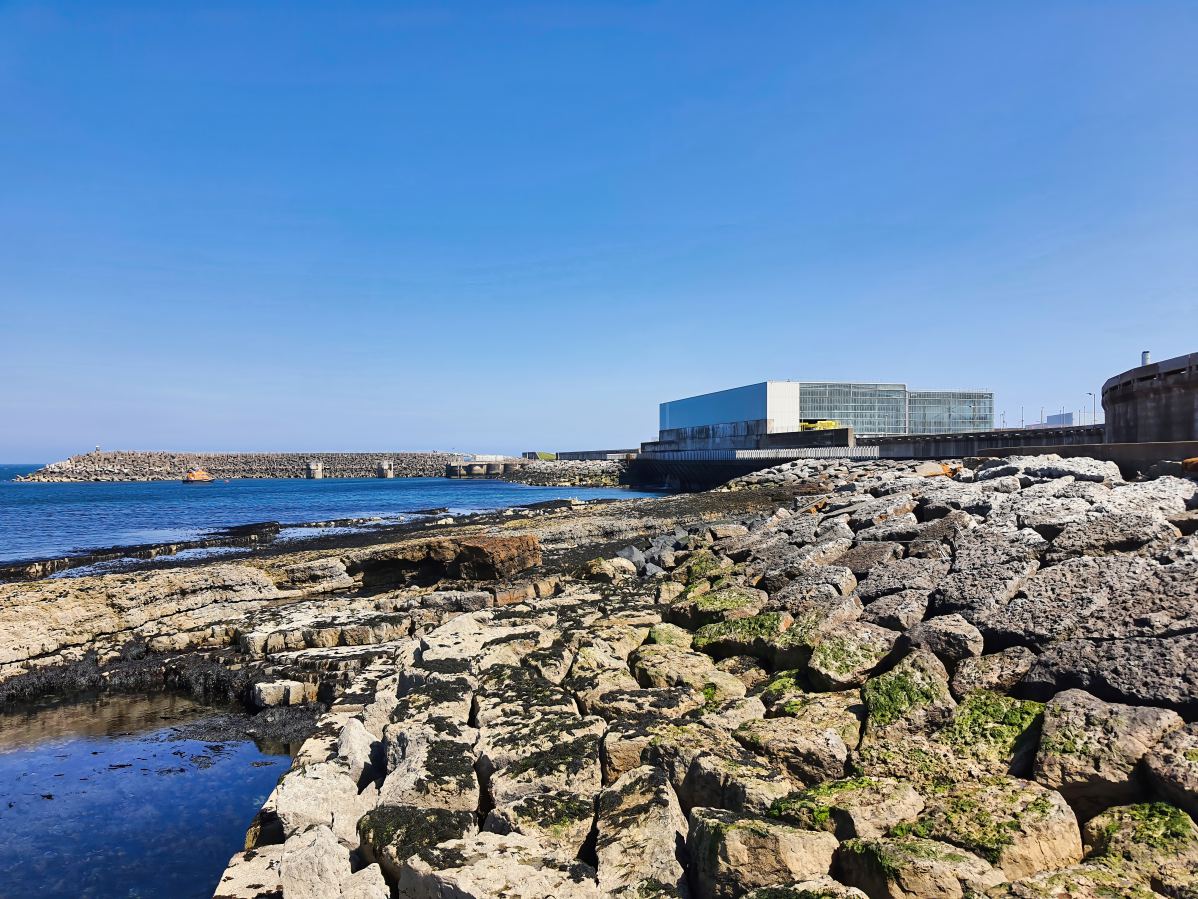
The Highlights
1: This is a surprisingly nice walk along a stunning stretch of East Lothian’s coastline. Combined with a free tour inside the power station it offers visitors a great afternoon’s entertainment for absolutely no cost.
2: The footpaths that continue past Torness power station run for miles and miles in both directions and are well worth exploring for anyone who wants a leisurely coastal walk. Cove, located 3 miles to the south (Cockburnspath, TD13 5XD), is perhaps the highlight thanks to its hidden-away harbour and its secluded golden-sand beach.
Visiting Tips
1: The historic Skateraw Lime Kiln is an interesting place that has a car park, picnic benches, and toilets. It’s probably the best place to begin a walk along this section of the coastline, but it’s also worth going because it has a secluded beach that locals hardly ever use.
3: Torness Power Station has an excellent visitor centre that explains the story of nuclear power in fascinating detail and also allows visitors to see the plant close up on free guided tours. Drop-in visitors are welcome, but tours have to be pre-booked. Phone the visitor centre (Telephone: 01368 873909) to arrange a booking.
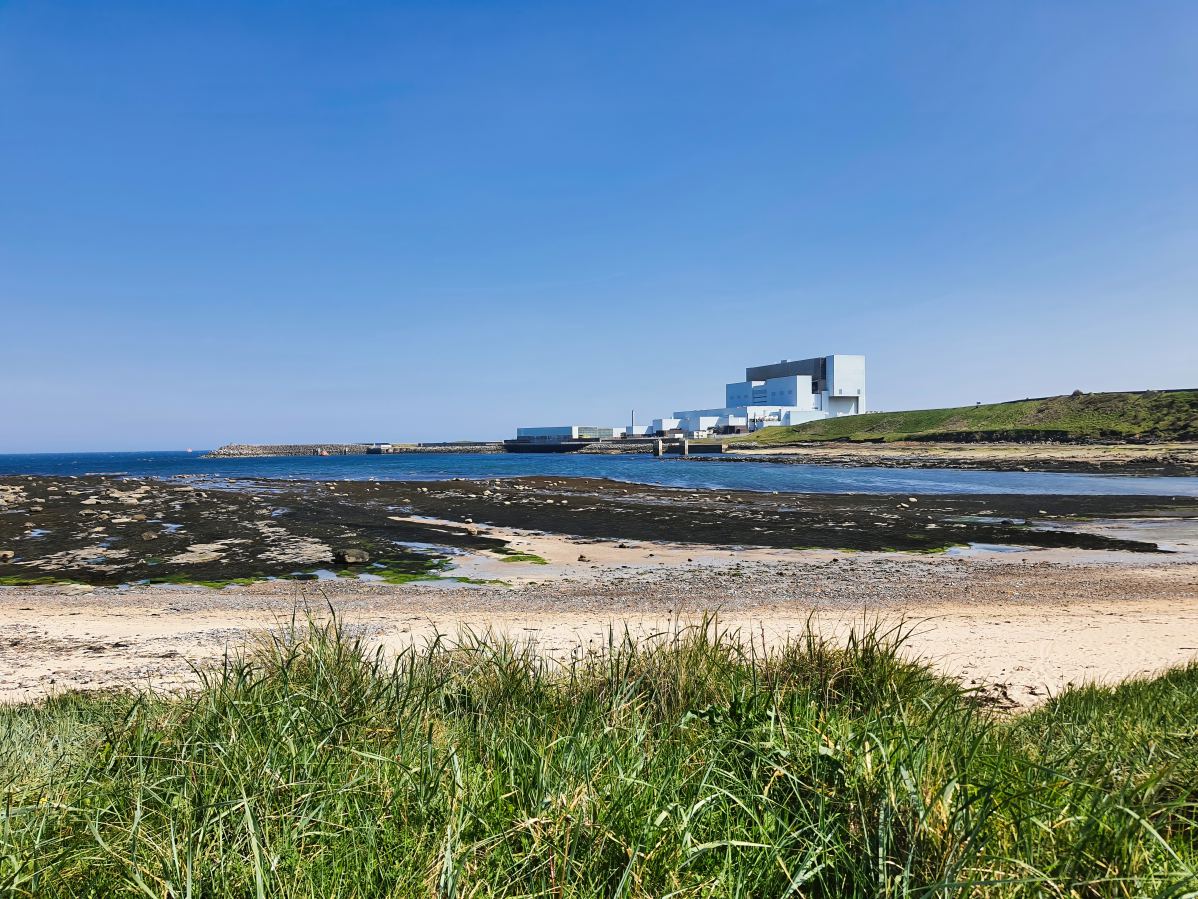
Tourist Information
Options for walking are obviously in one of two directions, the first being north past the Barns Ness lighthouse and around to Whitesand nature reserve which borders the Dunbar golf course and the Dunbar caravan site.
This walk is around 5 miles there and back but you can extend it by walking around the Whitesand Quarry lake which is managed by the RSPB and is a haven for breeding birds (definitely take binoculars ).
As far as the path goes, it’s mostly rough grass, but towards Barns Ness and Whitesand, there’s a long section of tarmac that’s suitable for buggies and wheelchairs. There’s another car park at Whitesand that allows easy access to the beach, so it’s the best parking place for wheelchair users as there are grass tracks leading onto the beach that are relatively level and compacted.
The other direction from Torness Power Station heads south past Thorntonloch caravan park and along the dunes that border the 1-mile Thorntonloch Beach.
When the tide is out, you can follow the coastline pretty much all the way down to Cove Harbour which is a great walk but a wee bit tricky due to the rocks and boulders you’ll have to scramble across. Alternatively, there’s a footpath on the cliff edge that follows the coastline towards Cove, where you can (if you’re in the mood for a really long walk) join the Southern Upland Way .
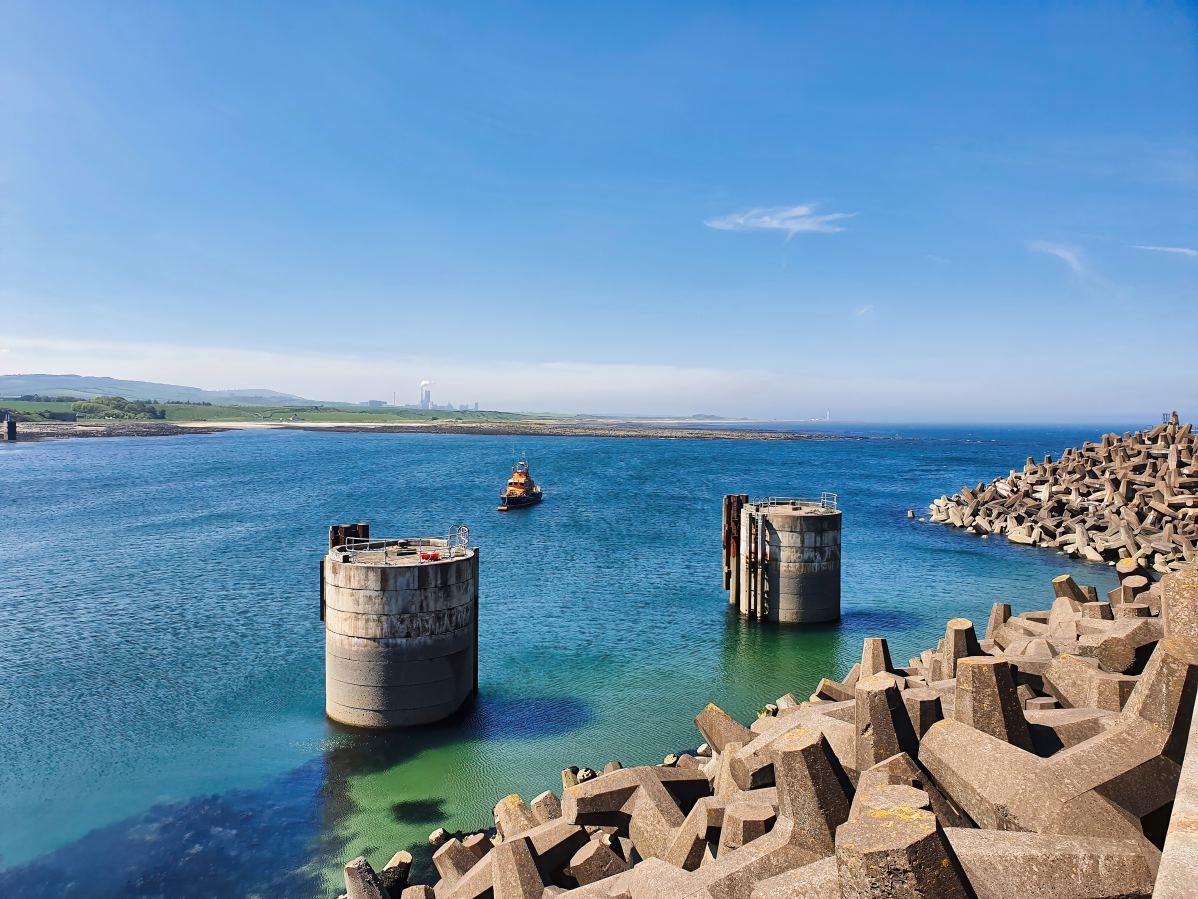
Things to Do
Power Station Tour : Join a free guided tour of Torness Power Station. It’s a unique chance to learn about nuclear energy production and witness the operation of a working nuclear power plant. The expert tour guides will provide fascinating insights into the daily workings of Torness.
Visitor Centre : Explore the Visitor Centre where you can engage with interactive exhibits related to nuclear power and its history. There are informative displays that break down complex scientific concepts into understandable tutorials, making it a great educational visit for all ages.
Wildlife Watching : The power station is located near a nature reserve which is a perfect spot for birdwatching and wildlife observation. The surrounding coastline is teeming with sea birds and marine mammals and you’ll likely spot seals, waders and gulls, and possibly even dolphins.
Scenic Walk : Enjoy a leisurely walk along the shore near the power station. The Scottish coastline provides breathtaking views and it’s an ideal place to unwind and enjoy the natural beauty of the area.
Photography : Capture the enormous Torness Power Station against the backdrop of the surrounding landscape. This combination of industrial marvel and natural beauty makes for some great photography opportunities.
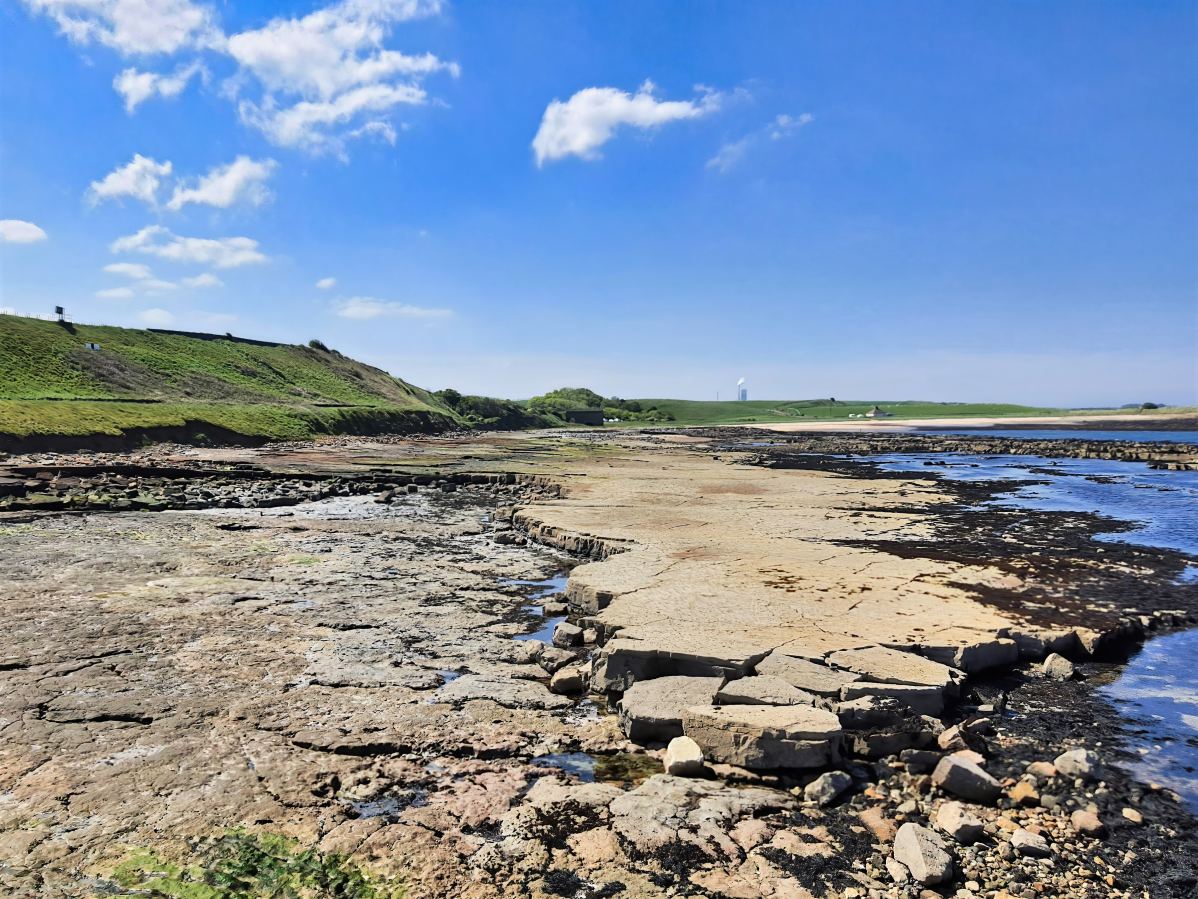
Things to Do Nearby
Woodhall Dean Wildlife Reserve . Dunbar EH42 1SJ. 10-minute drive. A nature reserve on the edge of the Lammermuir Hills in East Lothian. The reserve is home to sessile oak trees (a once-abundant tree that is now dwindling in numbers) and is highly regarded for the carpets of woodland wildflowers that bloom in spring.
St. Abbs Head . Eyemouth TD14 5QG. 24-minute drive. A national nature reserve in a spectacular clifftop setting that’s famed for its seabird colonies. There’s a multitude of footpaths that offer walks throughout the reserve and there’s a small loch slightly inland that’s a haven for ducks, swans,and other wildlife.
Thorntonloch Beach . Dunbar EH42 1QS is a 2-minute walk. A lengthy stretch of golden sand located immediately south of Torness power station. The shallow beach enjoys some of the best waves on the East Lothian coastline,making it a popular spot for windsurfers.
Whitesand Bay . Dunbar EH42 1QP. 10-minute drive. A popular bay a few miles southeast of Dunbar that’s backed by the golden sands of Whitesand Beach and the greenery of Whitesand Nature Reserve. The reserve is alive with wildlife throughout the year, and visitors are almost guaranteed to see owls, wading birds, roe deer, red foxes, and many more animal species.
Fast Castle . Eyemouth TD14 5TY. 18-minute drive. A ruined castle situated on a rocky headland a few miles north of St. Abbs Head. The castle isn’t much more than a collection of ramshackle walls but it’s a favourite spot for wildlife watchers thanks to the seal colonies that can be seen on the rocks below. In addition, clifftop footpaths allow visitors to enjoy some of the Scottish Borders’ most picturesque views.
Frequently Asked Questions
Is torness power station still operational.
As of 2023, the Torness power plant in Dunbar, East Lothian, is still in operation. EDF Energy has stated that Torness, along with the Heysham 2 nuclear power plant in Lancashire, will shut down in March 2028 for defueling and eventual decommissioning.
The rating of Torness’s two state-of-the-art gas-cooled reactors is 1,364 MWe. Over 550 permanent EDF workers work at the power plant, and visitors can view interactive displays and take part in free tours of the facility at the visitor centre.
Is Torness power station safe?
The strict safety procedures built into today’s nuclear power facilities have earned them a reputation for being safe. However, the Office for Nuclear Regulation (ONR) has issued a warning that cracks at the Torness nuclear power plant might prevent the cooling of highly radioactive reactor fuel, prompting safety concerns.
What type of power station is at Torness?
The Torness power plant is a nuclear facility in East Lothian, Scotland, that uses two Advanced Gas-Cooled Reactors to generate electricity. The station first went live in 1988 and will be operational until the late 2020s.
What attractions are near the Torness power plant in East Lothian?
One popular attraction near Torness is the town of Dunbar which offers a variety of things to see and do including Dunbar Harbour and the John Muir Birthplace museum as well as beautiful beaches such as Belhaven Bay .
For those interested in outdoor activities the nearby Lammermuir Hills offer a range of hiking trails with stunning views of the surrounding countryside. Alternatively, visitors can take a leisurely stroll along the John Muir Way, a long-distance walking route that stretches from Dunbar to Helensburgh.
Related Posts

Fascinating Facts About Attractions in East Lothian

Yester Castle Visitor Guide
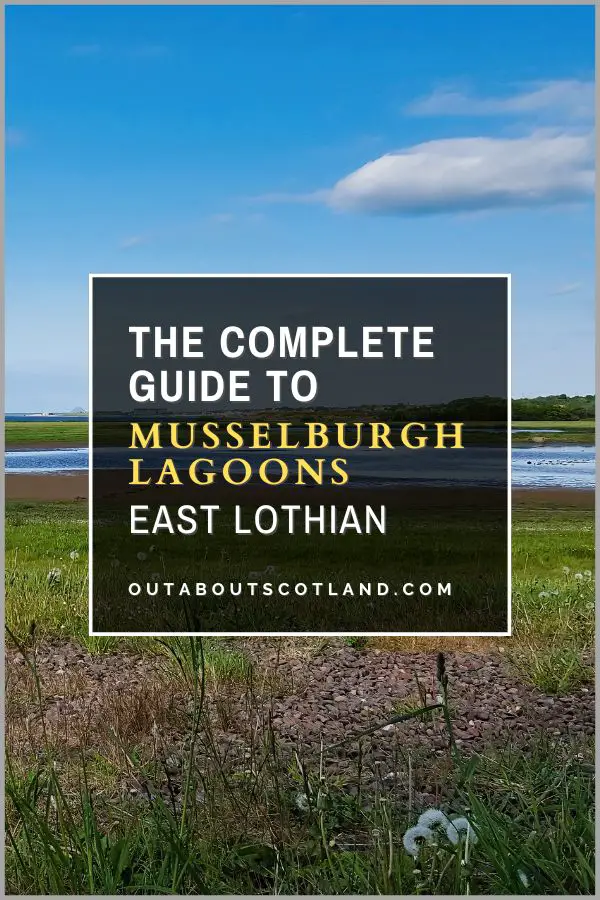
Musselburgh Lagoons Visitor Guide

Musselburgh Beach Visitor Guide

Craig Neil is the author, photographer, admin, and pretty much everything else behind Out About Scotland. He lives near Edinburgh and spends his free time exploring Scotland and writing about his experiences. Follow him on Pinterest , Facebook , and YouTube .
We've noticed that you're using an out of date browser. We recommend that you update to the latest version to enhance your browsing experience.
Availability Search for Torness Power Station
Terms & conditions.
This booking system and any information appearing on this page relating to the availability of any accommodation is provided by third parties and not by VisitScotland. It is intended to provide real time availability information relating to accommodation which is also provided by third parties. You may use this booking system to place direct bookings with third party accommodation providers. Any booking you make will not be placed with VisitScotland and we will have no liability to you in respect of any booking. If you proceed to make a booking you will leave our Website and visit a website owned and operated by a third party. VisitScotland does not have any control over the content or availability of any external website. This booking system and any information appearing on this page is provided for your information and convenience only and is not intended to be an endorsement by VisitScotland of the content of such linked websites, the quality of any accommodation listed, or of the services of any third party.
Torness Power Station
**PLEASE NOTE - The visitor centre is closed until further notice with tours suspended until at least the start of 2021**
Our free and accessible five star award winning interactive visitor centres at Torness and Hunterston B, offer classroom facilities,presentations and site tours which tie in with the Curriculum for Excellence which aims to excite students of all ages
The visitor centres are where you can find out more about EDF Energy’s nuclear power station operations, how we generate electricity and more about EDF Energy.
Pre-arranged site tours are also available – please give us at least two weeks’ notice. And please check our frequently asked questions about accessibility to our sites. Weekend and evening tours available, by prior arrangement only & minimum group size of 10.
Groups will be able to come on site and explore electricity with us – seeing first hand how we use nuclear power to provide low carbon electricity for the UK.
And all this is free…
First produced power in 1988 and has an expected lifetime of 2023. The site has two reactors and produces enough low carbon power for around 2 million homes. The site employs around 550 EDF Energy people and 180 full time contractors. See below for careers at EDF Energy.
All sites tours require advanced booking. Tours will be available at the weekend, subject to availability and demand.
SEE RIGHT FOR PUBLIC TRANSPORT DETAILS
Frequently Asked Questions
Q: Why do I need to pre-book a site tour, can I not just turn up?
A: To comply with the requirements of our site licence and our regulators, all tours must be booked in advance and visitors will be subject to some security clearance processes. This means tours must be booked at least two weeks in advance. You will also be required to bring photographic identity with you, preferably your passport, to complete the arrangements prior to going on the tour.
Q: Is there anything I can't bring on site with me?
A: Yes, to ensure we comply with our Nuclear Site License, there are restrictions on taking specific items on to site, including weapons, cameras, mobile telephones and video recording equipment. This applies to all staff and visitors. Please contact the site to clarify whether you are permitted to take an object on to site.
Q: I’m a foreign national, am I allowed on the site tours?
A: Foreign nationals may be allowed on the pre-arranged tours but are subject to additional security requirements and need prior approval from the Office of Nuclear Regulation (ONR). This will take a minimum of 15 working days. Please note that these requirements do not apply to children under the age of 16 who are visiting as part of an organised school party.
Q: How accessible is the pre-arranged tour?
A: Our visitor centres are open to everyone and are fully accessible to all. The walking tour of the station can take approximately one hour to complete and does take in lifts, narrow corridors and in some cases stairways, so may not be suitable for people with walking difficulties. Please check with our visitor centre staff prior to leaving on the tour if you have any concerns Q: Will I be safe on a nuclear power station?
A: The safety of our staff, visitors and the communities around us is our number one priority. All our guides are fully trained to ensure that your visit will be both safe and enjoyable. During the tour you may hear alarm tests or announcements, these are part of our normal operations and your guide will keep you advised as to what they mean
Q: Do I need to wear special clothing?
A: No. Some of our stations require visitors to wear a high visibility jacket and in some cases hard hats, these will be provided for you before you leave on the tour. It is advisable to wear shoes that are comfortable for walking long distances.
Join us full time
EDF Energy is the fastest growing utility company in the UK and our goal is to make EDF Energy the number one utilities company for personal development, where talented people are identified and progress quickly to fulfil their potential. We have put a range of world class development programmes in place at varying levels within the company to develop employee skills and competencies. Torness and Hunterston have well developed apprentice schemes, with recruitment starting each autumn, and also highly regarded graduate and industrial placement programmes. There are also engineering and business support vacancies at the sites. www.edfenergy.com/careers .
Transport and Parking
Accessibility.
- Accessible Parking Or Drop-off Point
Cookies are required to view this content. Change your preferences at Manage Cookie Settings
The content of many of our web listings is provided by third party operators and not VisitScotland. VisitScotland accepts no responsibility for (1) any error or misrepresentation contained in third party listings, and (2) the contents of any external links within web listings ((1) and (2) together hereinafter referred to as the "Content"). VisitScotland excludes all liability for loss or damage caused by any reliance placed on the Content. The Content is provided for your information only and is not endorsed by VisitScotland.
What's Nearby
Accommodation, attractions, food & drink, terms and conditions.
City Guide to Edinburgh, Scotland

- EdinburghGuide.com
- Visitor Attractions
Torness Nuclear Power Station
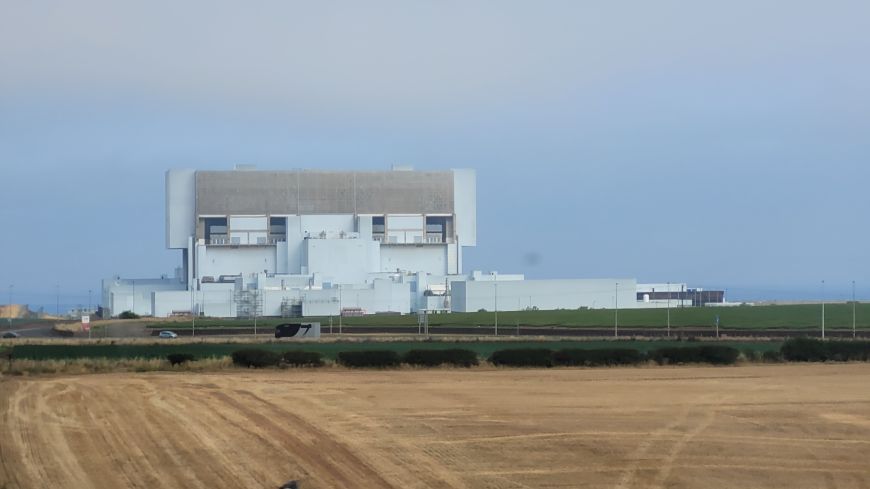
Located 33 miles from Edinburgh, within the Edinburgh postal district, Torness nuclear power station is a major local supplier of energy owned by utility corporation EDF. The power station has been producing zero-carbon electricity since 1988 and is expected to continue energy generation until 2028.
Torness also has a visitor centre, with free tours of the facility. Booking ahead is required three weeks in advance.
The tour last 1.5 hours.
Minimum age for the station tour is 8 years old.
55.970128926446, -2.406864038038
Torness Nuclear Power Station
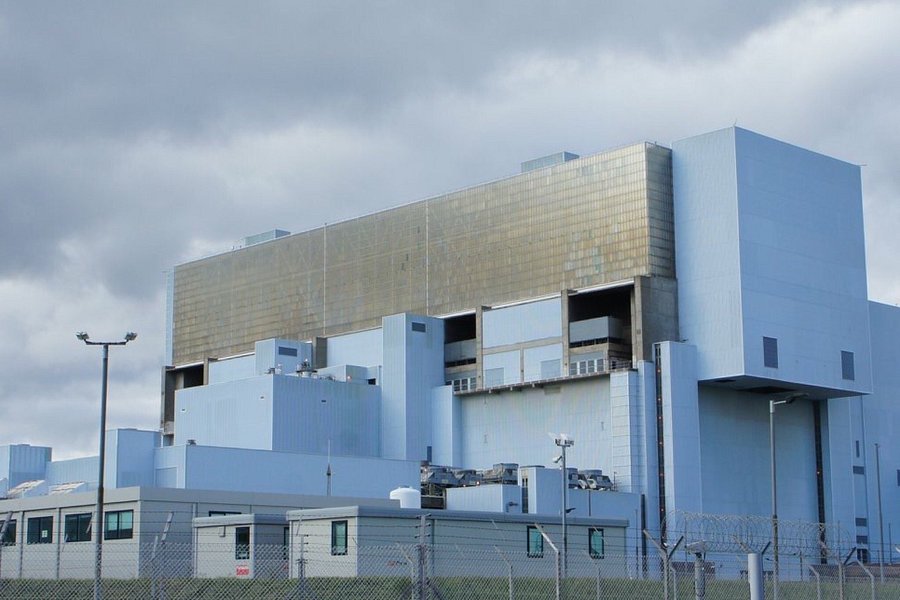
Most Recent: Reviews ordered by most recent publish date in descending order.
Detailed Reviews: Reviews ordered by recency and descriptiveness of user-identified themes such as wait time, length of visit, general tips, and location information.

Also popular with travelers

Torness Nuclear Power Station, Dunbar
- (0.51 mi) Thorntonloch House
- (4.65 mi) The Dolphin Inn
- (4.45 mi) Dunmuir Hotel
- (9.09 mi) Harvest Moon Holidays
- (4.02 mi) Pease Bay Leisure Park
- (4.90 mi) Black Agnes Restaurant
- (4.78 mi) Graze Coffee and Chocolate House
- (4.85 mi) Creel Restaurant
- (4.45 mi) 1902 Bar & Grill Restaurant @ the Dunmuir Hotel
- (8.87 mi) Tyninghame Smithy

Torness and Viridor Visitor Centres
Have you ever wondered what goes on behind the scenes at an operational nuclear power station? Torness power station has a purpose-built visitor centre where you can explore how electricity is created in the exhibition space and take a free tour of the facilities. Tours are free and cater for groups and individuals but need to be booked in advance. You can also visit the bespoke visitor centre at Viridor ‘s Energy Recovery Facility just outside the town. Here visitors will learn about sustainable waste management and how energy recovery fits into the waste hierarchy.
Dunbar is located in East Lothian, Scotland and this website highlights things to do and tourist attractions that are in the local area.
- Fun For Kids
- History & Culture
Torness Nuclear Power Station

Most Recent: Reviews ordered by most recent publish date in descending order.
Detailed Reviews: Reviews ordered by recency and descriptiveness of user-identified themes such as waiting time, length of visit, general tips, and location information.
Also popular with travellers

Torness Nuclear Power Station, Dunbar
- (0.51 mi) Thorntonloch House
- (4.65 mi) The Dolphin Inn
- (4.45 mi) Dunmuir Hotel
- (9.09 mi) Harvest Moon Holidays
- (4.02 mi) Pease Bay Leisure Park
- (4.90 mi) Black Agnes Restaurant
- (4.78 mi) Graze Coffee and Chocolate House
- (4.85 mi) Creel Restaurant
- (4.45 mi) 1902 Bar & Grill Restaurant @ the Dunmuir Hotel
- (8.87 mi) Tyninghame Smithy
- Knowledge & Networks /
- Communities /
- Member Groups /
- 14-03-24 Torness Nuclear Power Statio...
Tyneside (UK)
Torness nuclear power station tour.
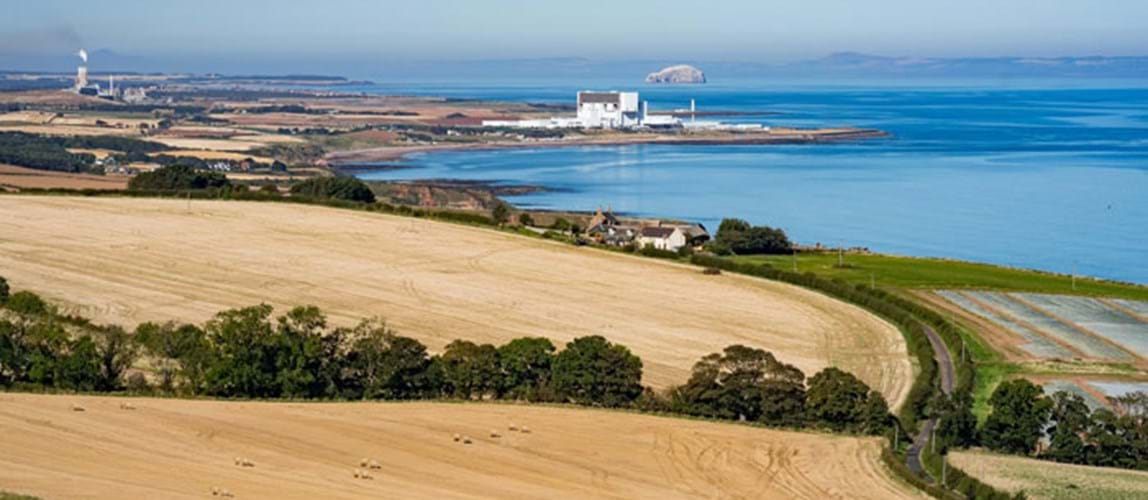
- Date From 14th March 2024
- Date To 14th March 2024
- Price Free of charge.
- Location Torness Power Station, Dunbar, EH42 1QS
This 90 minute tour of Torness nuclear power station will include the reactor viewing gallery and turbine hall.
Coach transport provided by Newcastle University. The start time is the estimated time of the coach at the pick-up point.
Attendance to this event will require submission of a form via the IChemE for Torness power station as this is a nuclear facility. This will include your name, date of birth, nationality and home address.
Essential information
All attendees are required to bring with them their passport OR their photo driving license AND birth certificate. Please contact us directly if ID is an issue and we may be able to find a work-around with the power station.
Please ensure you have read all power station documentation before attending.
Telephones, cameras and electronic devices are not permitted on the tour, and consent to undertake a handheld metal detection test on arrival is required to enter the facility.
The tour includes use of lifts and stairs (90 of) as well as narrow corridors and as such may unfortunately not be able to accommodate any with mobility difficulties.
Please read the Protocol Briefing document to ensure who are comfortable with the requirements for the visit.

Registration deadline
Registration for this event closes at 12:00 GMT on Tuesday 21 February, the form needs to be completed and returned by 12:00 GMT on Wednesday 22 February 2024.
Event registration closes before the event date to ensure all documentation is submitted and reviewed as required by EDF Energy.
Places are limited, so we reserve the right to close registration early if the attendance limit has been reached.
08:00 – 14:00 GMT
Member-exclusive content
Become an IChemE member to enjoy full access to this content and a range of other membership benefits . If you are already a member, please log in.

Torness Power Station
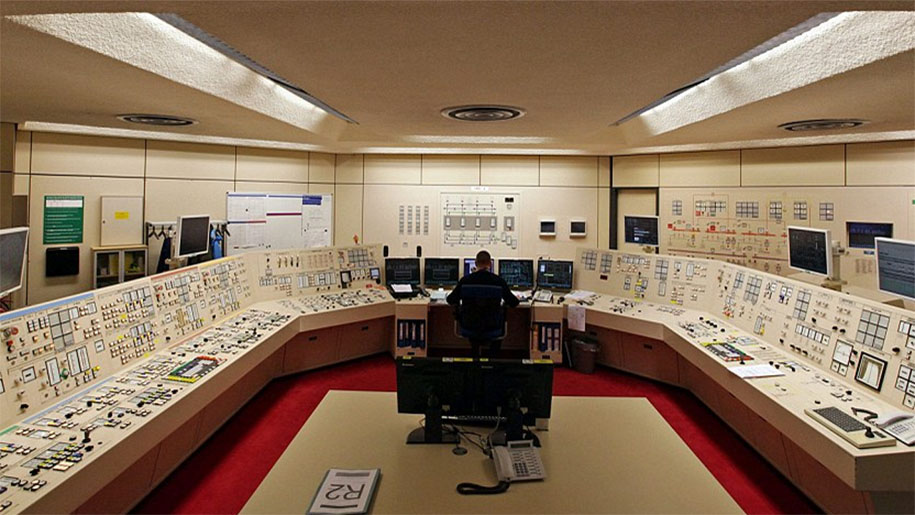
In a nutshell
Explore nuclear power generation in this 5 star interactive visitor centre, or you can book a free station tour with their knowledgeable guides.
Torness Power Station Dunbar, Dunbar
Contact details
Tel: 01368 873909
Email: [email protected]
Activity type
Historical Sites, Science and Technology
Suitable for
Ages 5 - 12, Schools and Groups, Teenagers
Price guide
£0.00.
(based on family of 4)
- Street View
Torness Power Station details...
If you’re looking for a fun, informative and FREE day out with the kids, head to Torness Power Station in Dunbar. With a Five Star rating from VisitScotland the visitor centre gives you the chance to explore nuclear power generation and includes a fun, interactive exhibition. The visitor centre is open from Monday – Friday, 09.00 – 16.00, evening and weekend tours may be possible by prior arrangement. You can also book a free station tour where our knowledgeable guides will help you see for yourself exactly how a nuclear power station generates low carbon electricity. PRE-BOOKED tours only, at least 3 weeks in advance.
For further information call 01368 873909, or e-mail [email protected]
- Contact by email
- Share this page -->
- Print details
Torness Power Station reviews...
Get your local vouchers, competitions & events news first with our free newsletter , leave a review for torness power station, user log in, user sign up, newsletter signup.
All of the latest attractions, events, vouchers & competitions near you.
Torness nuclear power station: clean energy in action
Last month I had the pleasure of visiting Torness nuclear power station in Scotland – many thanks to EDF for hosting me and giving me a detailed tour. I got to both stand on top of one of the reactors and touch the side of it, close to the gas injection pipes. (I joked to an anti-nuclear friend that when I did so I could see all the bones in my hand…obviously I couldn’t!)
When I write my blogs I often go to Adobe Stock to buy the base images I use to make the pages look pretty (I then combine at least two in order to create an original artwork). I try to make these images relevant to the subject, but have noticed when I search for “nuclear” many of the results are scary looking men in hazmat suits, and gas masks, with an evil-looking green miasma swirling around. Clearly for use in anti-nuclear propaganda.

I arrived on site on a sunny but windy day in late February. I had been instructed to leave my phone and other electronic devices in my car, and bring photo ID to the security gate, where I was given my visitor’s pass, had my bag scanned and was subjected to an airport-style security search. I was then met by a nice lady wearing a “Responsible Escort” lanyard, which made me wonder if I would meet an “Irresponsible Escort” at some point in the day and what that might look like(!).
She took me to the office of station director, Paul Forrest, where I was met by Paul and Fiona McCall who is the Senior External Affairs Manager for the existing EDF nuclear fleet. After getting kitted up with PPE (I had my own steel toe-capped boots and safety glasses and was provided with a boiler suit, hard hat, ear defenders and work gloves although I ended up having to take the gloves off since I started getting an allergic reaction to them).
First of all we took a walk past the workshop where some of the 750 on-site staff repair parts or inspect new parts ready for installation, before heading directly to the nuclear part of the site.
Understandably, security was high, both personal and for the site. We crossed over a line which marked the point at which PPE was mandatory and went to collect our dosimeters (radiation detectors) which had to be electronically registered and associated to our security passes. Fiona then went through a full height turnstile to enter the nuclear controlled area and I was directed to enter through a heavy security door. When Paul tried to follow through the turnstile, he found he was unable to enter: his dosimeter and security pass had stopped talking to each other and he had to go away and get them re-connected. Not even the station director gets to by-pass security protocols.

The charge machine, painted a fetching shade of pale green, trundles up and down between the two reactors to carry out its functions (during my visit both reactors were in use, but the charge machine was on a maintenance outage). The machine (and room housing it) is tall enough to accommodate the 10m long fuel rods known as “stringers” – the crane is positioned above the reactor, extracts an old fuel rod, turns round, and inserts a new one, in a seamless motion. Obviously, this takes place during re-fuelling outages and not while the reactors are running!
Reactor 2 is about to go off-line for a re-fuelling outage, and then reactor 1 will go off for a statutory outage, a period of around 65 days when some 13,000 – 15,000 tasks that are completed in order to ensure that the plant remains compliant with all relevant regulations and maintains a safe operating environment. Each statutory outage involves a £20-25 million investment in the plant.
While the tasteful green colour of the charge machine has no particular significance, other colours used on site have more meaning, and not just the company logo! Plant painted pink represents a single point of vulnerability making them easy to identify. Also, in order to avoid removing the wrong kidney /amputating the wrong leg type of mishaps, all the paperwork for reactor 1 is on yellow paper and that for reactor 2 is on blue, so it is immediately obvious to which reactor any given piece documentation relates.
By now, Paul had re-joined us, and we went to stand on one of the reactors, 32 meters above ground (the bottom of the containment is 12m below ground level). Of course, we were not standing directly on the reactor – we’re not idiots – but on top of the containment, in this case, 18 inch thick steel blocks known as the “pile cap” which were designed at the time of initial construction (ie long before 9/11) to withstand an aircraft impact.
Paul explained that the biggest risk is not from a passenger jet, since although they are very large, they travel relatively slowly by aeroplane standards, but from Tornado fighter jets whose heavy, dense engine block could theoretically impact the reactor containment at very high speed. (There are some great pictures in this article , which I won’t reproduce for copyright reasons but are worth looking at, including of the pile cap.)

It was also quiet – the only noise was from fans required to cool the building, not from the reactor, but from the sun – the building has little insulation and large windows, meaning that even on cold sunny days, it can become quite warm inside. There were also no vibrations from the reactor. It’s cool, quiet and drama-free.
We then descended several floors to reach the reactor floor, where I got to touch the side of the reactor, next to one of the gas circulators. Also on Friday, the Guardian newspaper published some pictures of nuclear installations under the headline ‘A picture of hell’: inside the UK’s nuclear reactors – in pictures but going on to say the photographer found them “tranquil, beautiful and sinister”, one of which was taken at Torness, at the same spot on which I was standing.
At a basic level, nuclear reactions give off heat which is used to produce steam which turns the turbines which turn the generator which generates electricity. The way that the heat from the reaction is accessed is by passing gas through the reactor – it enters at 250 o C (for a cold start this temperature is achieved through pressurising the gas, but otherwise it is warm from its previous passage through the reactor) and reaches 660 o C by the time it exits. The big orange circle (in the Guardian picture) is the panel through which the gas (CO 2 ) enters the reactor. You can also see the different phases of the three-phase supply used to power the reactor. A heat exchanger is used to heat water to produce steam.
Leaving the nuclear controlled area was even more involved than entering. This time we had to enter something similar to the full body scanners at airports to make sure we had not received any radiation contamination. The machine had a woman’s voice which initially kept telling me to “get closer” which was tricky since I was already pressed against the edge of the scanner. I had to place my hands and fore-arms inside special slots as well.
The voice then counted down from six (apparently the number is random either four, five, six or sometimes seven. It then comfortingly told me that the radiation detected was zero. In fact there were two such machines, and each time I had to stand facing into and then out of the scanner, and each time the result was the same: zero contamination. Luckily we had not been outside, since the cosmic rays to which we are exposed on a daily basis would result in a non-zero reading!

The reason for this length of time is the time needed to bring the plant up to temperature for steam production. Paul told me that while Torness could not sit at half-load for extended periods, newer reactors can, and of course, in France, reactors operate flexibly since as close to 80% of the electricity mix they need to be able to vary output in line with demand (load following).
So we then came to the turbine hall. Each reactor has its own dedicated turbine set, each in three parts operating with declining temperature and pressure until you reach the generator itself. The gas which circulates in each reactor heats water to create high temperature, high pressure steam which turns the high pressure turbine.
The steam is then re-cycled before passing through the intermediate pressure turbine, and is again re-cycled before passing into the low pressure turbine which then turns the generator to generate electricity. The casing of each of these turbines gets progressively less warm, as expected (yes, I touched all of them!)
Unlike the charge hall, the turbine hall was LOUD! Very LOUD! But this is conventional plant – turbines are not quiet, and you would not find the turbine halls of gas or coal power stations being any quieter (unless they were turned off!).
After lunch I visited the exhibition centre. The picture below is of a model of the plant, which shows all the different sections of the site and gives a sense of the scale of the operation (the little model people give an idea of how large the plant is).

I had an interesting discussion with the lady there about the control rods, as this was something I had forgotten to ask while I was inside the plant. The control rods are held by magnetic clasps which release instantaneously when needed to drop inside the reactor ending nuclear reactions in 4 seconds once inserted. Both the fuel rods and control rods pass through the core structure which is comprised of graphite bricks.
These bricks are the subject of much regulatory concern since the Office for Nuclear Regulation believes that they may become dislodged during an earthquake inhibiting the passage of control rods into the core. While this may be the case, it currently requires that 100% of the control rods be capable of entering the core in a 1-in-10,000 year earthquake – 10x larger than the largest ever recorded in the UK, despite the fact that only 15% are actually required to terminate the reaction and there are two other shut-down methods that could be engaged in the highly unlikely event that the control rods did not work. I discussed this in more detail in my report on nuclear power published last November.

People have all kinds of assumptions about nuclear power, most of which I think are mis-placed. The reality is that our nuclear power stations are extremely safe, and entirely drama free. The entire vibe is calm, and the plant was impressively clean for an industrial site.
It was clear that working to a high standard was embedded in the culture – in some organisations, safety rules are met will eye-rolling and a tick-box mentality, but at Torness it was clear that not only was basic industrial as well as nuclear safety taken very seriously, it is part of the operational DNA. There is a clear “take the time to do it right” mentality and a calm efficiency about the operations.
I had a really interesting and enjoyable day at Torness and would like to thank Paul and Fiona for showing me round what is a very impressive site.
Subscribe to the Watt-Logic blog
Enter your email address to subscribe to the Watt-Logic blog and receive email notifications of new posts.
Email Address
Share this post:
Related posts.
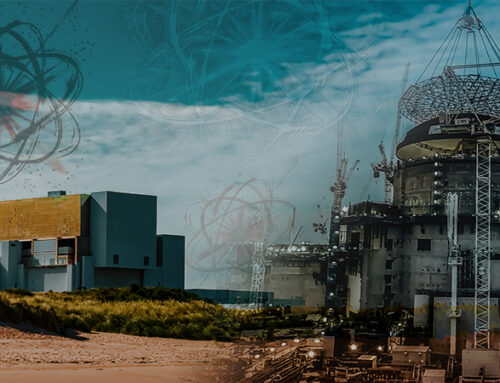
Disappointing roadmap and AGR retirements risk periods of no nuclear from 2028

Energy market outlook – what can we expect in 2024?
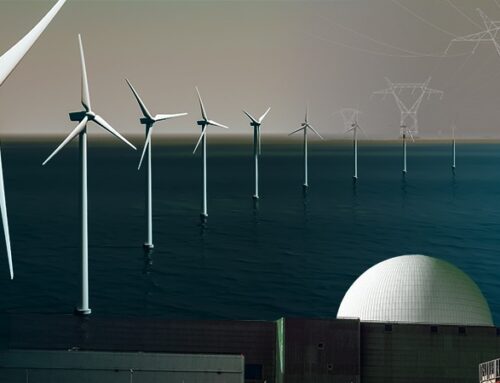
Energy market review of 2023
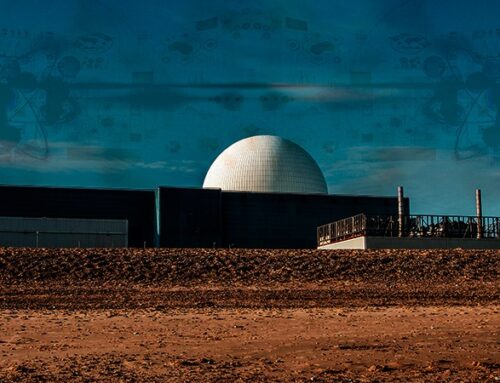
New report: Prospects for nuclear energy in the UK
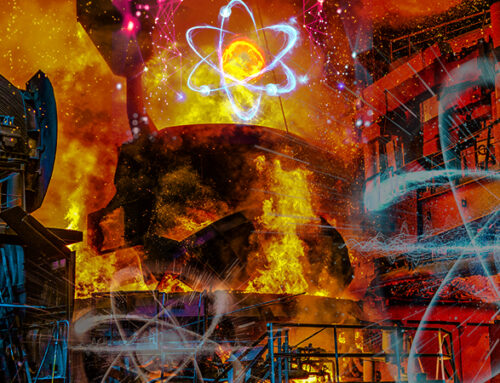
Heavy industry is hard to de-carbonise – small-scale nuclear could be the answer
15 comments.
“Obviously, this takes place during re-fuelling outages and not while the reactors are running!”
Actually though the AGRs were designed to be re-fuelled while running at 100% power. The reason why this was not possible in practice (although some have managed to do it at part load) is as follows:
1) A dropped stringer could break and obstruct the flow of gas.
2) As long as the reactor is shut down within about 10 seconds, this is fine but any longer and there is a risk of fuel melt and fission product release.
3) To ensure that this emergency shutdown is achieved, there is a weight sensor in the charge machine which can detect a dropped stringer and shutdown the reactor quickly.
4) However here is where the problem occurs because high pressure gas is flowing up through the channel while you lower the stringer in and this pushes the stringer and reduces the weight load on the sensor.
5) They were never able to get to a point where the control system had the required sensitivity to a genuine drop without nuisance tripping from gas flow at any point above 50% power level.
In addition to this, there were turbulence issues which kept it below 30%.
I think even the stations where they got it working for part load don’t do it anymore as it isn’t worth the hassle but it was definitely a design goal.
Pleased you had a good time visiting Torness. I was privileged to work on the design of Torness, alongside many hundreds, if not thousands more, working for the National Nuclear Corporation back in the late 1970s and 80s. The attention to detail in the design is borne out in what you saw and experienced.
When i was in younger members Kent section of the IEE the CEGB were great supporters of providing tours of power stations in the South Eastern Division and that included Dungeness B. It sent quite a shiver down me to be standing on top of the reactor and all that power being contained just below you but as you say no noise and drama to accompany it that you got in the boiler house of fossil fulled stations. The AGRs were a drama initially but they served the UK well and i find it utterly depressing that we are now totally dependent on other countries if we want to build anymore
Thank you. Let’s look forward to Wind, Nuclear and Hydrogen, with fossil fuels for air travel etc.
Good Evening,
It’s been a while since I visited any nuclear power stations or research reactors – but your description is familiar. It all felt very safe. And if we could just keep the existing nuclear fleet going indefinitely I would support that 100%. But we seem to have a problem with building ‘New Nuclear’ and it’s probably for reasons that you appreciate better than I. The capital costs seem to be beyond what any private company can sustain and can only be borne by governments. And the plants are slow to build – with a very high risk of delay and cost overruns.
The prospect of small modular reactors (SMRs) is held out as a lifeline, but I am sceptical. ‘Small’ in the case of Rolls Royce seems to be over 500 MWe which is roughly the size of Torness. The UK doesn’t need that many such reactors and so the advantages of modular designs are unlikely to provide that great a saving. Personally, if they had the plans I would be happy if they just re-built the Magnox or AGRs exactly as they were built last time!
And then there is the question of the safe disposal of the high-level waste. In my understanding – despite having had a solid 60 years to address the issue of safe permanent disposal we have not permanently disposed of a single gram of high-level waste. This is a problem that really needs to be addressed *before* we build a new generation of reactors.
Best wishes
Security, Security, Security. Is the problem with single SMRs that the cost of security would outweigh the technological benefits?
Or is it that they would most likely be installed as multiple units at a large site, with the same total output as one/two larger reactor(s), such as those at Torness, and hence the cost of security would be no different in magnitude to current sites per GW output?
What are your thoughts?
There are some hopes that Heysham can be re-used for SMRs in part due to lack of space for another GW scale reactor. This would obviously enable scale for security. But down the line there are plans to embed SMRs in industrial sites, and while this makes a lot of sense, it relies in identifying workable security solutions. Building a nuclear reactor next to a chemical plant would increase the danger associated with a terrorist act significantly.
Please forgive the layman’s question. Is the inertia of the masive turbines & generators a factor in varying output? Could the nuclear core ramp up steam production to feed additional smaller ‘throttleable’ turbines in meet peaks in demand above base load?
The inertia of “massive” turbine/generators is a great benefit to the grid in managing variations in grid frequency and is true of nuclear, gas and coal fired plants, but not of solar or wind. And these variations in grid frequency do also require/produce variations in output from the turbine generator. The need to manage grid frequency becomes harder as more wind and solar are used, and although batteries can do a bit of this (keeping it simple) rotating steam turbine generators are actually much better doing this job. There is some feedback of this into the heat exchangers and nuclear reactor, but it is usually limited as most nuclear reactors are not geared to ramp load up and down at the speed associated with managing grid frequency. Some nuclear reactors can be designed to ramp up and down more quickly (submarine reactors come to mind) but if you have spent that much money on a nuclear reactor for electricity production you keep it going at as high a load as practical and safe. Hence they operate as base load – if they could ramp up they would do it 24/7 instead. So in conclusion I don’t believe your idea would work. Until we can overcome the need for electricity to be generated in balance with demand, we will always find a need for generating plant with differing characteristics to suit base load and peak load requirements. That then turns into a question of economics. You don’t want so much base load that you have to turn off a nuclear reactor simply to shed load off the grid. On the other hand you don’t want to be permanently in a position of running diesel generators or open cycle gas turbines to supply all the time (cheap to build, expensive to run). Until we crack the economics of storage of electricity at bulk (ie large enough to take on board all of the load above base load) the need for generators of different characteristics will remain. There are some options out there, but none have yet been sufficient to crack the size of the problem.
Inertia is not a factor in varying output – the aim is to keep the turbine running at a fixed speed (usually 1500rpm) to give a 50Hz output. Output is varied by changing how hard the turbine is pushing against the rest of the grid (trying to lift that 50Hz frequency or allow it to fall) with no significant change in speed. In fact inertia is helpful in lots of ways as the rotational energy in the turbine means that for short periods (seconds) the turbine can deliver more power as it slows down than the nuclear reactor sat behind it, which is handy if another power station suddenly fails as it gives people controlling the grid a little time to react.
As nuclear is run as baseload in the UK then basically the turbine is run as hard as it can be (given the rating of the reactor and the rating of the turbine / generator) and the actual rotational speed (i.e. the grid frequency) is set by other power stations running at part load which are ramped up and down to match the load and keep the frequency constant.
The problem with running traditional nuclear power stations at lower powers is that they aren’t designed for it and the nuclear reactions which occur at low powers create various elements which in turn affect the rate of the nuclear reaction and therefore the stability of the reactor. You can make various design decisions to make low power operation more stable but at the time the AGRs were designed there was no need to.
Torness has two reactors, each capable of generating 660 MW of electricity. The Rolls Royce SMR is (currently) slated as a single reactor unit giving 470 MW of electricity.
Kathryn….when do sleep ? Phenomenal output in the past few weeks plus Podcasts & a hard hat tour of Torness with excellent commentary. A very interesting informative account that anyone with a modicum of engineering knowledge could appreciate. Great British Nuclear (BNG) are in discussions with EDF over the purchase of 100 acres of the 255 acre site at sister plant Heysham 2. Hartlepool is also being considered. Both are approved for new nuclear & will facilitate Rolls-Royce future SMR & AMR development. In the meantime I look forward to catching up on the latest Watt-Logic (my window on the world) topics in a timely fashion. Thanks so much Barry Wright, Lancashire.
Kathryn – an amazing post. Thank you so much. Outstanding detail, in layperson’s language.
A most interesting post. I have always been impressed with the AGRs and their performance. I was considering that we keep hearing about issues with graphite blocks cracking; if we were re-building would it be a good idea to have thoe graphite material included withing the fuel bundle – so, effectively, reducing the time that the graphite spent in the reactor.
And I would like to point out that modern designs of reactors also include thermal energy stores; such buffering would allow better following of demand. The cost (of rocks) for such would be about £5/kWhr, if operating at 650 degC, as has been proven elsewhere – so really depends upon how long you would want to store energy for however many hours and how many buffers (at £5M/GHr)
Hi all…thanks Kathryn. This has proved to be a great topic, generating many interesting replies. My thanks to Mathijs Van den berg for his excellent account of problems associated with on load refuelling (OLR) of AGR’s, responsible no doubt for an eye watering loss of revenue over the years. Heysham 1 on the other hand was never a contender for OLR. Constructed on a compact footprint with a seismic risk. Emergency reactor shut down coinciding with a power failure was always a major consideration. Clutches release moderator rods which drop under gravity into the reactor core, no power supply required. Generators normally supply their own auxiliaries via adjacent station transformers, not so at Heysham 1. Auxiliaries are supplied from a 132kv substation off site a mile away. Loss of this supply is backed up by 4 on site Rolls-Royce Olympus generating sets (3 mins run up time)
My overall view of the postings suggest big nuclear plants remain the favoured way forward in the UK. I would agree but supported by a robust high capacity supergrid network however a massive spend is required as intimated in the media today. I also note the reference to the difficulty of reactors to cope with flexing output to suit demand always was a problem. I assumed that high capacity storage addressed this as well demonstrated with the Dinorwig pumped storage scheme constructed some 40 years ago & still in operation today. The excellent reply posting by David Leigh (10/2/2024) identified over 100 suitable possible sites across the UK; surprised that pumped hydro is not raised in the discussion. We are a small island with a population approaching 70 million. Energy security is vital moving forward. IMO we have everything that could lead to an independent national energy supply network providing low cost green electricity for all, lifting millions of consumers out of poverty. Independence is the key here, no need for often fragile supplies from Scandinavia & mainland Europe or gas imports from the USA or elsewhere. Barry Wright, Lancashire.
Leave A Comment Cancel reply
Save my name, email, and website in this browser for the next time I comment.
Notify me of follow-up comments by email.
Notify me of new posts by email.
This site uses Akismet to reduce spam. Learn how your comment data is processed .
- 01 Shop My Daily Looks
- 02 My Amazon Shop
- 03 Romantic +Size Style
- 04 +Size Brands Guides
- Savannah Travel Guide
- Key West Travel Guide
- Charleston Travel Guide
- Biltmore in Asheville Travel Guide
- My Nashville Travel Guide
- 5 Southern US Cities to Visit this Spring
- Big Island Hawaii Travel Guide
- My Kauai Travel Guide

A Tour of Edinburgh Scotland
The third and final leg of our Scotland tour was spent in the city of Edinburgh. To get there, we trekked across the rolling highlands , combed the rocky beaches along the Banff coast , and made our way south for a full five nights in the bustling heart of Edinburgh.

Edinburgh is a historic and charming city, perfect for exploring on foot. It’s a site-seeing city, with a wealth of architectural marvels to study and photograph. We visited all the major attractions, including Edinburgh Castle, the Scotch Whisky Experience, the Royal Yacht Brittania, and the Palace at Holyroodhouse. We also took a day trip to Torness Nuclear Power Station with stops in North Berwick and Dirleton on the way back. Read on for a detailed account of our adventures in Edinburgh!
Read Previous:
Exploring the Scottish Highlands
Visit Scotland: Aberdeen & the Banffshire Coast
Edinburgh Bus Tours and The Royal Edinburgh Ticket:
To orient ourselves, we purchased The Royal Edinburgh Ticket through Edinburgh Bus Tours . To start, we took a series of double-decker bus tours around the city. Each tour featured a different route throughout the city, with different history lessons and tidbits on where to go and what to do. We navigated Edinburgh’s old and new towns and took in all of the gorgeous historic architecture.

The Royal Edinburgh ticket also granted us entry to three of the city’s most regal establishments: Edinburgh Castle, The Royal Yacht Britannia, and The Palace of Holyroodhouse.
The Royal Edinburgh Ticket: Edinburgh Castle
Edinburgh Castle sits atop a cliff, overlooking the city below and beyond. It’s quite a spectacle from below as well. Navigating the downtown streets, you might glance down a side street and see the castle mound towering above. The walk to the castle entrance is quite an uphill hike, but the views of Edinburgh city are incredible, worth the cost of admission alone. But the castle also houses several exhibits on Scottish history, the life of Mary Queen of Scots, and the long line of kings who have ruled throughout the centuries. The castle is still used for royal events and has several exhibits on display within its grounds. Our favorite feature was the exhibit on the crown jewels, which we were able to admire in all their sparkling opulence up close.

After exploring the castle, we walked a short ways down the street to Witchery by the Castle for lunch. It’s a magical little restaurant with a bewitching and romantic atmosphere. We shared the beef tartare and the lamb wellington for two, and it was one of the most charming and memorable meals of our trip.

The Royal Edinburgh Ticket: Royal Yacht Brittania
The Royal Yacht Brittania is another of the Royal Edinburgh Ticket attractions, and as the royal family’s former ship, it was used for both work and play. The King and Queen both had offices aboard, and the royal family would host formal meetings and dinners in the ship’s many parlors and dining rooms. The formal dining room is a museum of sorts, displaying gifts from foreign diplomats and family treasures. Along the right side of the dining table, on the far wall, you can see a narwhal horn on display.
The ship was also a haven for family holidays. The royal family would sail to exotic locations across the globe, and several royal couples also cruised away on their honeymoons aboard the Britannia. The ship is now docked and used as a museum, featuring much of the same furniture, china, and housewares once used by the royal family. After we toured the ship, we enjoyed an afternoon tea and luncheon in Britannia’s tearoom overlooking the harbor.

The Royal Edinburgh Ticket: Palace of Holyroodhouse
The last stop on the Royal Edinburgh Ticket was The Palace of Holyroodhouse , where the Queen takes up residence during July. The palace offers audio tours through its royal apartments, gardens, and abbey ruins. You enter the palace much as a visitor seeking council with the king might have done: through a series of rooms, each growing more and more elaborate as you draw nearer and nearer to the royal apartments and the king himself.

The Scotch Whisky Experience:
Another of our Edinburgh favorites was The Scotch Whisky Experience . The gold tour begins with an amusement ride of sorts, where we embarked on the journey of whisky making. From there, we were given a presentation on Scotland’s four whisky regions: Speyside, Highlands, Lowlands, and Islay. The presentation defined the different regions and the unique flavor profiles of each. Then we were offered a tasting of their featured whiskies from each region so we could taste the different and unique characteristics for ourselves. We were also able to tour the largest Scotch whisky collection in the world, with nearly 3,500 bottles spanning centuries.

Day Trip to Torness Nuclear Power Station and North Berwick:
While I planned most of our trip, seeking Kyle’s input here and there, Kyle did plan one special day for us. He’s been wanting to visit a nuclear power plant for ages, and Scotland’s Torness Nuclear Power Station is fully functioning and offers tours to give a behind-the-scenes glimpse into how its run. We drove out to Torness to start our day and learned about how nuclear power works, how the plant runs, and its variety of safety precautions and protocols in case of an emergency. Kyle and I both enjoyed the tour: he who knows his science and has a sincere interest in nuclear power, and me, who was just along for the ride.
From Torness, we drove to nearby North Berwick for lunch and a look around the town. We walked along the beach, dreaming of a life in one of its waterfront cottages.

Dirleton Castle & Gardens:
From there, we headed back towards Edinburgh and stopped in Dirleton to tour its castle and gardens. Dirleton Castle is a countryside castle and overlooks the crop fields and farm grounds beyond. Its garden are vibrant and lush: one at the entrance abloom with wild flowers and the other near the exit with perfectly manicured bushes and beds. We explored the castle ruins, wandered through its colorful gardens, and walked around the quaint little town a bit before heading back to our home base in Edinburgh.

Arthur’s Seat:
As a grand finale to our Scotland vacation, Kyle and I hiked Arthur’s Seat at sunset on our last evening in Edinburgh. Arthur’s Seat is a dormant volcano sitting some 800 feet above sea level, giving excellent views of the city below. We spiraled up the hillside and took a seat overlooking the city to catch the sunset. While the sun went down, we talked about the highlights from our trip, all of which I’ve shared here with you in the last three posts. It was such an incredible vacation that reminded us of our shared love for adventure, history, and natural beauty.

Thank you all so much for reading and for letting me share my favorite Scotland memories with you. I’m so pleased to have these posts as a journal of sorts, to document our trip and to look back on to relive our trip. Scotland was rugged and beautiful, from the mystical highlands, to the Banffshire coast, to the charming city of Edinburgh.
Have you ever been to Edinburgh? What were your favorite attractions and memories from your stay? Which regions of Scotland did we miss that you think we should visit in the future?

Subscribe to Receive New Post Notifications
Check your inbox or spam folder to confirm your subscription in order to start receiving new post notifications.
15 thoughts on “ A Tour of Edinburgh Scotland ”
Looks like you had a great vacation! That sunset view from the hill is especially gorgeous.
I see you had a picture with the E-On Energy mascot blu….if you could enlighten me as to what he’s actually supposed to be that’d be wonderful. Us brits think it resembles….well, you know.
Loving all your piccies from your tour!
I believe his name is Zingy? lol We weren’t allowed to take any pictures inside of the plant, but the tour guide encouraged us to take our picture with Zingy as a memento. I suppose he represents nuclear energy, but I’m not sure how. We looked at how the energy is stored, and it’s stored in these stacked pellets stored in an even larger cylinder. I didn’t see any orange blobs. But I assume they want him to be adorable and lovable to promote nuclear power. Unfortunately, his reminiscent shape is making that difficult!
The whisky tasting looks really fun.
Looks like you had a wonderful trip. Thanks for sharing.
It was really informative and definitely grew our appreciation for whisky. We love wineries and breweries and unpacking all their different flavor profiles. This tour introduced us to taking the same approach to whisky. Glad you’ve enjoyed the recaps and pictures!
What a fantastic trip. Did you feel like you were in a Downton Abbey episode or a Jane Austen novel? Cause that’s what is looks like. So dreamy!
It was definitely like being in another world. We’re currently binge watching Game of Thrones, and we keep cracking jokes about how different backdrops remind us of different places we visited in Scotland. The Iron Isles are now “Dunnottar Castle.” While the troops are moving across the landscape, we say, “Oi! Trekking across the highlands!” Pretty soon we’ll forget what the novel names are, and everything will be renamed something from our vacation.
What a wonderful trip. I love that you went on so many tours. I love tours. You look so good! I am always a sweaty mess in vacation photos! You look like a queen. And the love you guys have together is always so apparent. That picture of the two of you is beautiful.
We don’t normally do a lot of tours, but I’m so glad we did on this trip. It definitely helped us to get oriented and taught us a great deal about the history of Scotland. They were so great that I want to take more bus tours in the future. They’re so convenient and well worth the cost.
I’m usually a hot mess on vacations, so I really tried to look a bit more polished on this one. I knew we’d be taking loads of photos. I was so thankful that the weather was cool so I wasn’t sweating or exhausted from the heat.
I definitely made an effort to snap some nice photos of us on our trip. When it’s just the two of us on vacation, it’s hard to get nice couple photos. We just end up taking a ton of selfies. So I committed to doing a lot of self-timer shots. I’m glad I did. We have some really nice photos from our trip. I’m brainstorming gift ideas for ways to use them for the holidays. I’ve been spending lots of time on Shutterfly trying to pick out different photo gifts!
I’ve really enjoyed reading about your adventures in Scotland, and this post makes me wish we’d had more time to explore the city when we visited a few years ago with a friend. That last photo of you and Kyle looking out at the view is so nice. That needs to go in a frame on the mantelpiece! Also, how delightfully random that you went to a nuclear power plant! Though it does make sense when you say Kyle is a science chappie! 😉
Thanks, Gwen! I love how that photo of me and Kyle turned out. It felt a bit awkward to take, but it turned out well. I suppose it was less embarrassing to pose that way for our self-timer than to ask someone else to take it!
The nuclear power plant was totally random. Before we left, our family and friends kept asking us “Why?” If they’d get me alone, I’d have trouble explaining, as I didn’t really understand why Kyle was so eager to go either. But I ended up learning a lot, and it was definitely something different to do! The tour guide was so friendly and sweet that he could have taken us on a tour of anything, and we’d have enjoyed it.
- Pingback: Scotland Style: Royal Princess | withwonderandwhimsy
- Pingback: NOW & LATER: Styling Floral Prints for Summer & Fall - withwonderandwhimsy
- Pingback: Resort 2016: Travel in Style - withwonderandwhimsy
- Pingback: Shades of Summer: Aqua & Coral - withwonderandwhimsy
Comments are closed.
Scotland Style: Beach-Combing
Visit scotland: aberdeen & the banffshire coast, wonder & whimsy on the map.

Savannah, GA
San juan island, pagosa springs, co, key west, fl.

- Privacy Overview
- Strictly Necessary Cookies
This website uses cookies so that we can provide you with the best user experience possible. Cookie information is stored in your browser and performs functions such as recognising you when you return to our website and helping our team to understand which sections of the website you find most interesting and useful.
Strictly Necessary Cookie should be enabled at all times so that we can save your preferences for cookie settings.
If you disable this cookie, we will not be able to save your preferences. This means that every time you visit this website you will need to enable or disable cookies again.
Switch language:

Data Insights
Power plant profile: torness 1, uk.

- Share on Linkedin
- Share on Facebook
Torness 1 is a 682MW nuclear reactor which is located within the premises of Torness Power Station. It is located in Scotland, the UK. According to GlobalData, who tracks and profiles over 170,000 power plants worldwide, the nuclear reactor is currently generating power and is in active status. The construction on the reactor commenced in Aug, 1980. The first power from the reactor was achieved in May, 1988. Subsequent to trial runs the reactor finally entered into commercial operation in May, 1988. Buy the profile here.
Smarter leaders trust GlobalData
Premium insights torness 1.
Buy the Profile
Premium Insights
The gold standard of business intelligence.
Find out more
Related Company Profiles
Electricite de france sa, centrica plc.
Description Torness 1 is a Generation II nuclear reactor developed by National Nuclear, the main contractor for the project. The 682MW reactor is operated by EDF Energy Nuclear Generation Group. Electricite de France and Centrica are currently owning the project having ownership stake of 80% and 20% respectively. The GCR reactor generates 3,090.34GWh/annum of electricity. It features 332 fuel assemblies in the core of reactor, the place where fission occurs and energy is released.
Development status The reactor construction commenced in Aug, 1980 and subsequently entered into commercial operation in May, 1988.
Contractors involved GE Power was selected as the steam turbine supplier for the nuclear reactor. The company provided 1 steam turbine for the project. National Nuclear was selected as an architect engineer for the reactor. The reactor system was supplied by National Nuclear. The reactor vessel have been supplied by Sir Robert McAlpine Ltd and Whessoe Engineering. The material used for the construction of the vessel is Concrete (PC). The civil works were carried out by Sir Robert McAlpine.
For more details on Torness 1, buy the profile here.
This content was updated on 4 January 2024
Blending expert knowledge with cutting-edge technology, GlobalData’s unrivalled proprietary data will enable you to decode what’s happening in your market. You can make better informed decisions and gain a future-proof advantage over your competitors.
Be better informed
GlobalData , the leading provider of industry intelligence, provided the underlying research used to produce this article.
This information is drawn from GlobalData’s Power Intelligence Center , which provides detailed profiles of over 170,000 active, planned and under construction power plants worldwide from announcement through to operation across all technologies and countries worldwide.

Data Insights Torness 1
More relevant.
Ukraine's Trypilska power plant destroyed in Russian airstrikes
Cathodic protection companies, corrosion control and spray coatings for the power industry, is a nuclear power revival a good idea, sign up for our daily news round-up.
Give your business an edge with our leading industry insights.
Sign up to the newsletter: In Brief
Your corporate email address, i would also like to subscribe to:.
Future Power Technology : Focus (monthly)
Thematic Take (monthly)
I consent to Verdict Media Limited collecting my details provided via this form in accordance with Privacy Policy
Thank you for subscribing
View all newsletters from across the GlobalData Media network.

IMAGES
VIDEO
COMMENTS
Torness visitor centre has an interactive exhibition to help visitors learn about nuclear power generation, alongside a classroom facility. Tours take around 1.5 hours and can be pre-booked for free at least 3 weeks in advance.Minimum age is 8 years-old.; Trained station guides accompany the tours which include the reactor viewing gallery and the turbine hall.
The reactors at Torness Power Station are cooled by carbon dioxide gas, which is a more efficient cooling medium than water. This allows the reactors to operate at a higher temperature, which in turn increases their efficiency. Torness Power Station has been in operation since 1988 and has a total capacity of 1,248 megawatts.
3: Torness Power Station has an excellent visitor centre that explains the story of nuclear power in fascinating detail and also allows visitors to see the plant close up on free guided tours. Drop-in visitors are welcome, but tours have to be pre-booked. Phone the visitor centre (Telephone: 01368 873909) to arrange a booking.
Road. Torness Power Station. First produced power in 1988 and has an expected lifetime of 2023. The site has two reactors and produces enough low carbon power for around 2 million homes. The site employs around 550 EDF Energy people and 180 full time contractors. See below for careers at EDF Energy. All sites tours require advanced booking.
Torness nuclear power station is a nuclear power station located approximately 30 miles (50 km) east of Edinburgh at Torness Point near Dunbar in East Lothian, Scotland.It was the last of the United Kingdom's second generation nuclear power plants to be commissioned. Construction of this facility began in 1980 for the then South of Scotland Electricity Board (SSEB) and it was commissioned in 1988.
The power station has been producing zero-carbon electricity since 1988 and is expected to continue energy generation until 2028. Torness also has a visitor centre, with free tours of the facility. Booking ahead is required three weeks in advance. The tour last 1.5 hours. Minimum age for the station tour is 8 years old.
Amazing tour of Torness Power Station. Oct 2018 • Family. This is a fantastic tour of an engineering marvel that anyone travelling the A1 can't have failed to notice. The tour is free but you have to book through EDF at least 3 weeks in advance and all adults must bring photographic of such as a passport.
Torness power station has a purpose-built visitor centre where you can explore how electricity is created in the exhibition space and take a free tour of the facilities. Tours are free and cater for groups and individuals but need to be booked in advance. You can also visit the bespoke visitor centre at Viridor 's Energy Recovery Facility ...
Fascinating for young and older. Oct 2019. It comes as a surprise that a nuclear power station can be so interesting. The site is an award winning facility as an interpretive facility fully explaining in understandable terms how it all works. Fortunate the 4000 demonstrators in the 70's did not win their day.
Join us for a guided visit to Torness Power Station, Scotland's only generating nuclear power facility. ... 3.00pm We will arrive at the Power Station for a tour including introducion from Torness Station Director, 3.30pm Tour Concludes. 4.00pm Return to Edinburgh. 5.00pm Light bite at the Royal Scots Club (£15 per head) ...
This 90 minute tour of Torness nuclear power station will include the reactor viewing gallery and turbine hall. Coach transport provided by Newcastle University. The start time is the estimated time of the coach at the pick-up point. Attendance to this event will require submission of a form via the IChemE for Torness power station as this is a ...
You can also book a free station tour where our knowledgeable guides will help you see for yourself exactly how a nuclear power station generates low carbon electricity. PRE-BOOKED tours only, at least 3 weeks in advance. For further information call 01368 873909, or e-mail [email protected]
Torness Nuclear Power Station will be owned and operated by EDF Energy till 2023. The Torness Nuclear Power Station located near Dunbar, East Lothian, on the east coast of Scotland, is the last second generation nuclear power plant commissioned in the United Kingdom. The plant, initially owned by South of Scotland Electricity Board, came online ...
Vicky Allan: A Torness tour - a reminder there's a nuclear hole that needs fixing. Opinion ... East Lothian has a nuclear power station at Torness. A visit, with my son and a couple of friends, to ...
Torness nuclear power station: clean energy in action. Last month I had the pleasure of visiting Torness nuclear power station in Scotland - many thanks to EDF for hosting me and giving me a detailed tour. I got to both stand on top of one of the reactors and touch the side of it, close to the gas injection pipes.
Frequently asked questions. If you have any questions about the visitor centre, or about taking a tour, please check our FAQs or contact our visitor centre co-ordinator: Telephone: 01728 653974. Address: Sizewell B power station, near Leiston, Suffolk. IP16 4UR.
We also took a day trip to Torness Nuclear Power Station with stops in North Berwick and Dirleton on the way back. Read on for a detailed account of our adventures in Edinburgh! Read Previous: Exploring the Scottish Highlands. Visit Scotland: Aberdeen & the Banffshire Coast. Edinburgh Bus Tours and The Royal Edinburgh Ticket:
Power plant profile: Torness 1, UK. Torness 1 is a 682MW nuclear reactor which is located within the premises of Torness Power Station. It is located in Scotland, the UK. According to GlobalData, who tracks and profiles over 170,000 power plants worldwide, the nuclear reactor is currently generating power and is in active status.
If you have any questions about the visitor centre, or about taking a tour, please check our FAQs. Opening hours: Monday to Thursday: 10:00 - 16:00. Friday: 10:00 - 14:30. Weekends and bank holidays: Closed. Contact the visitor centre on: Telephone: 01524 868451. Address: Heysham 2 power station, Morecambe, Lancashire. LA3 2XH.